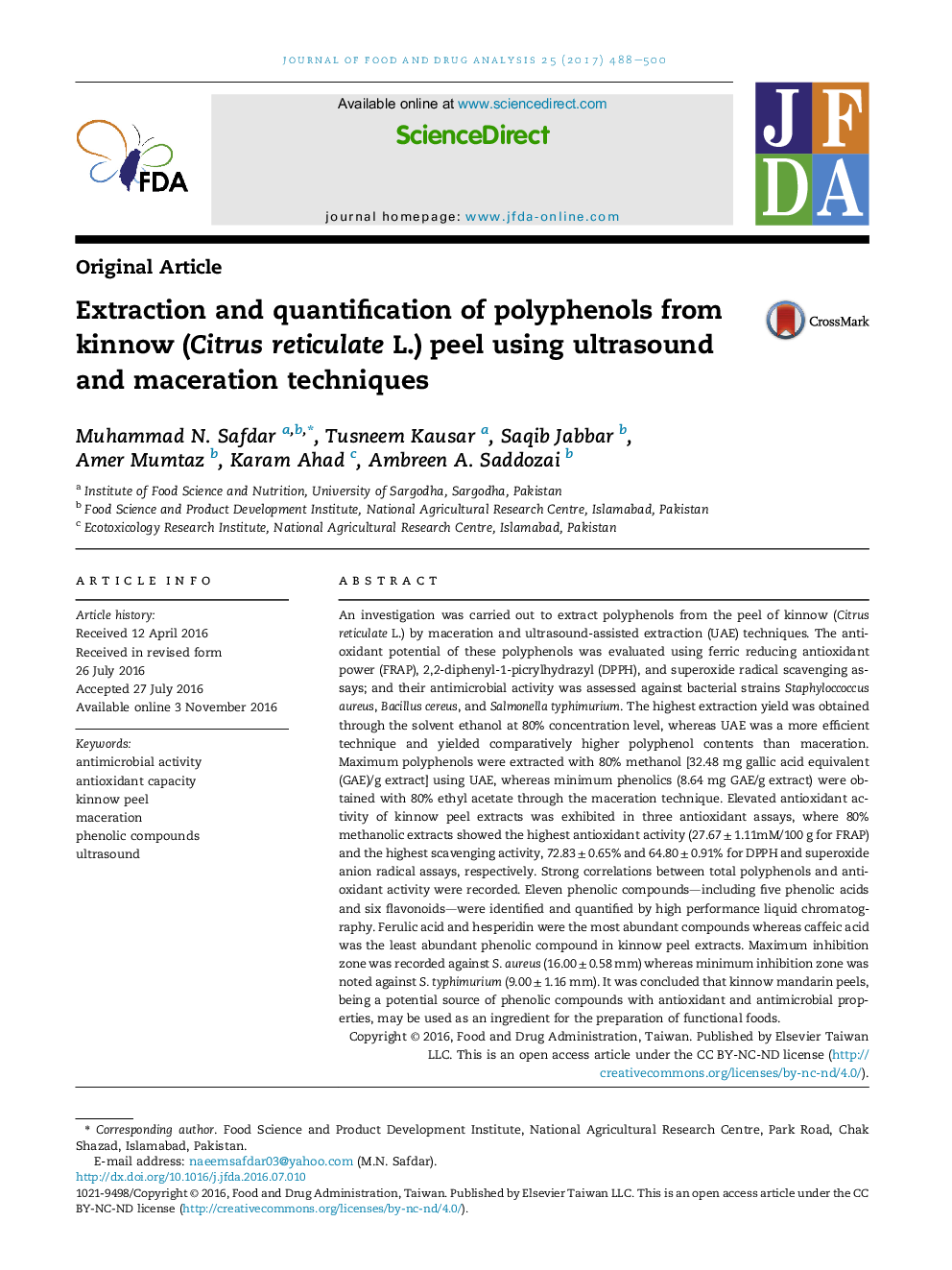| Article ID | Journal | Published Year | Pages | File Type |
|---|---|---|---|---|
| 5551032 | Journal of Food and Drug Analysis | 2017 | 13 Pages |
An investigation was carried out to extract polyphenols from the peel of kinnow (Citrus reticulate L.) by maceration and ultrasound-assisted extraction (UAE) techniques. The antioxidant potential of these polyphenols was evaluated using ferric reducing antioxidant power (FRAP), 2,2-diphenyl-1-picrylhydrazyl (DPPH), and superoxide radical scavenging assays; and their antimicrobial activity was assessed against bacterial strains Staphyloccoccus aureus, Bacillus cereus, and Salmonella typhimurium. The highest extraction yield was obtained through the solvent ethanol at 80% concentration level, whereas UAE was a more efficient technique and yielded comparatively higher polyphenol contents than maceration. Maximum polyphenols were extracted with 80% methanol [32.48 mg gallic acid equivalent (GAE)/g extract] using UAE, whereas minimum phenolics (8.64 mg GAE/g extract) were obtained with 80% ethyl acetate through the maceration technique. Elevated antioxidant activity of kinnow peel extracts was exhibited in three antioxidant assays, where 80% methanolic extracts showed the highest antioxidant activity (27.67 ± 1.11mM/100 g for FRAP) and the highest scavenging activity, 72.83 ± 0.65% and 64.80 ± 0.91% for DPPH and superoxide anion radical assays, respectively. Strong correlations between total polyphenols and antioxidant activity were recorded. Eleven phenolic compounds-including five phenolic acids and six flavonoids-were identified and quantified by high performance liquid chromatography. Ferulic acid and hesperidin were the most abundant compounds whereas caffeic acid was the least abundant phenolic compound in kinnow peel extracts. Maximum inhibition zone was recorded against S. aureus (16.00 ± 0.58 mm) whereas minimum inhibition zone was noted against S. typhimurium (9.00 ± 1.16 mm). It was concluded that kinnow mandarin peels, being a potential source of phenolic compounds with antioxidant and antimicrobial properties, may be used as an ingredient for the preparation of functional foods.
Graphical abstractDownload high-res image (275KB)Download full-size image
